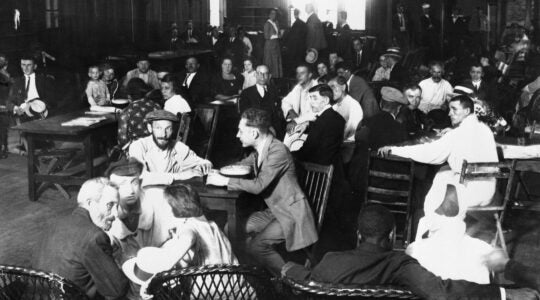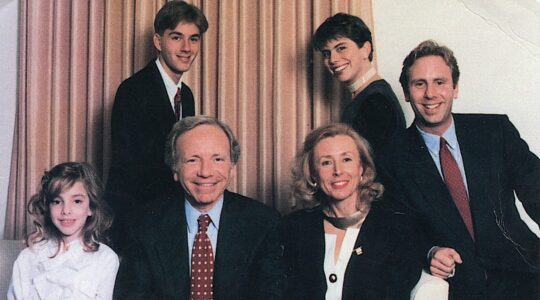NEW YORK (JTA) — We are living at a moment of great disruption. We all sense it. We all experience it. It impacts every aspect of our lives — education, economics, politics, social society. Judaism is not immune to these forces.
Changes in demography; declines in synagogue membership, educational fluency and connection; the rise of the “nones” (Jews who identify as Jewish with no religion); a weakening of the bonds to Israel; intermarriage and more are all signs of this moment of disruption. The institutions we built to sustain and nurture Jewish life for the last 200 years are crumbling while a new Jewish future, one that is not yet fully defined, is emerging.
Much has been written and discussed about the state of 21st century Jewry and what to do about it. Ultimately we are all asking a variation of the same question: How do we navigate a rapidly changing world in an authentic way?
In his book “Leading from the Emerging Future,” Otto Scharmer argues that our response “requires us to shift the inner place from which we operate. It requires us to suspend our judgments, redirect our attention, let go of the past, lean into the future that wants to emerge through us, and let it come.”
During the beginning of my tenure at the USCJ, I would often be invited to speak to congregational boards about membership recruitment and retention. Leaders always wanted to know how to attract and retain new members. I observed a 90-minute board meeting that had just four agenda items: a financial matter in the religious school, a casino night, a parent’s night out and the annual dinner-dance fundraiser.
At 9 p.m., following 90 minutes of frontal committee reports, it was my turn to teach this board about membership. I decided to throw aside my fancy PowerPoint and instead I asked for three people to share an experience that inspired them to sit at the board table. One person shared how his daughter stood under the huppah the week before and what it meant to be surrounded by a community that had shared in his family’s life journey. Another spoke about how her son died in a car accident 20 years earlier and teared up as she described the way the community literally helped her to get out of bed in the morning and continue living. And a third mentioned how his first trip to Israel was with the congregation and how he had become a lifelong learner as a result of it.
I challenged them, explaining that “if you want to attract and retain members, then you need to talk more about these stories and figure out how the congregation enhances and expands the key moments of people’s lives and functions as a catalyst for their passions through Judaism.”
In other words, it’s about purpose, not program. It’s about meaning, not membership.
In our work at USCJ, we know that what all thriving kehillot (sacred communities inside and outside the walls of a synagogue) share is intentionality around Jewish relevancy and relationship. When planning their year they don’t ask what programs they need to drive people into the synagogue. They ask what questions and challenges their people are struggling with and how they can be a source of connection and meaning that leads to the Kabbalistic notion of “shleymut” (wholeness).
In this time of great disruption, our focus must shift from structures to values. An authentic and dynamic Judaism is rooted in the wisdom gained at the intersection of heritage and progress. It is a Judaism that thrives in the tension of old and new, that finds unity in diversity, that is committed to lifelong Jewish growth, that is dedicated to excellence, and that understands that we are part of a great people, with a great tradition, that continues to this very day to inspire us to life fulfillment and a better world.
USCJ’s new branding and messaging launched this week is designed to more clearly communicate this vision, mission and values to our network of almost 600 kehillot and to those in the Jewish world who are seeking meaning, connection and shleymut in this way.
Our new brand is focused on this collective striving for meaning, which is why we decided on the tagline, “Seek meaning together,” we understand that no one person or institution has all the answers or all the resources necessary to succeed alone.
Our new logo also highlights this idea. It features interlocking U’s that reflect the strength of unity, partnership, collaboration and the notion that we are each links in the chain of the Jewish experience through time and place. Multiple shades of color reflect the diversity of our community — people of all backgrounds, ethnicities, gender, orientations and perspectives. An orange hue represents the light of Torah and the passions of our souls.
Our mission is to partner with congregations and other organizations to understand the profound nature of the disruption of our time and to develop strategies to meet the needs of the current and emerging Jewish future.
This Rosh Hashanah we begin not only a new year, but also a new age. Shanah tovah.
(Rabbi Steven C. Wernick is the chief executive officer of the USCJ, the United Synagogue of Conservative Judaism.)






